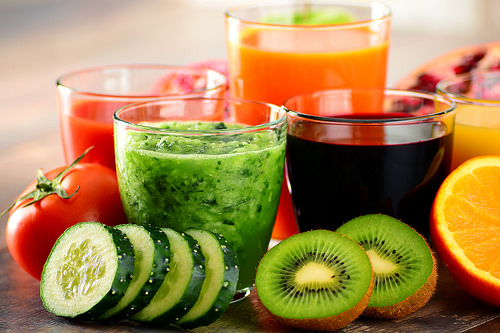The Department of Science and Technology’s Food and Nutrition Research Institute (DOST-FNRI) recently came up with natural fresh fruit drinks perfect for summer and beyond. Next to ice water, there is no better way to beat the tropical heat but drink fresh and nutritious fruit juices, au naturel!

The new concoctions come in two types: one as ready-to-drink fruit juices and another in concentrated form.
The ready-to-drink juice products are available in three flavors: guyabano-nata, ripe mango-nata, and green mango-nata.
The Guyabano-Nata Fruit drink is a mixture of sweetened nata de coco, natural guyabano juice, and sugar. Every 100 ml contains fruit fiber (2.1 g), vitamin C (134.6mg) and energy (139 Kcal).
Meanwhile, the Ripe Mango-Nata Fruit drink is a blend of ripe mango fruit juice, sweetened nata de coco, and sugar. One serving of 200 ml juice is equal to 55 percent Recommended Daily Allowance (RDA) for vitamin C and 7 percent RDA for energy for an adult male. Because of its nutritional content, the juice is ideal for the prevention and management of constipation, obesity, diabetes, and hypertension.
On the other hand, the Green Mango-Nata Fruit drink is an alternate variant of the Ripe Mango-Nata drink. It contains the same nutritional benefits as the ripe mango flavor. Every 100 ml has 130.22 mg vitamin C, 140 Kcal energy and 2 g fiber.
The juice type is available in 500 ml and one-liter bottles and has a shelf life of up to six months.
Meanwhile, the concentrated form has two variants, the Carrot-Pineapple and the Carrot-Mango, that come in 375 ml glass bottles. The juices can be stored up to a year at room temperatures between 28 to 32 degrees Celsius.
Both variants contain natural carrot juice and sugar as sweetener. These drinks are rich in B-carotene and vitamin A, thus increasing body resistance against infections and help facilitate fast recovery from illnesses. To prepare a 250 ml drink, one has to mix one part concentrate and one part water.
Written by Rodolfo de Guzman, S&T Media Service, DOST-STII


If you are considering developing an NFT marketplace, there are a few things you should keep in mind. First, you need to choose the right blockchain platform for your marketplace. Ethereum is the most popular blockchain platform for NFTs, but there are other options available, such as Solana and Tezos.
Second, you need to develop a strong marketing strategy. You need to reach out to potential users and let them know about your marketplace. You can do this through social media, email marketing, and paid advertising.
Finally, you need to provide excellent customer service. NFT buyers and sellers are likely to have questions about your marketplace. You need to be able to answer these questions quickly and effectively.
If you can do these things, then you can develop a successful NFT marketplace that will generate a profit
Link: NFT Marketplace Development Services